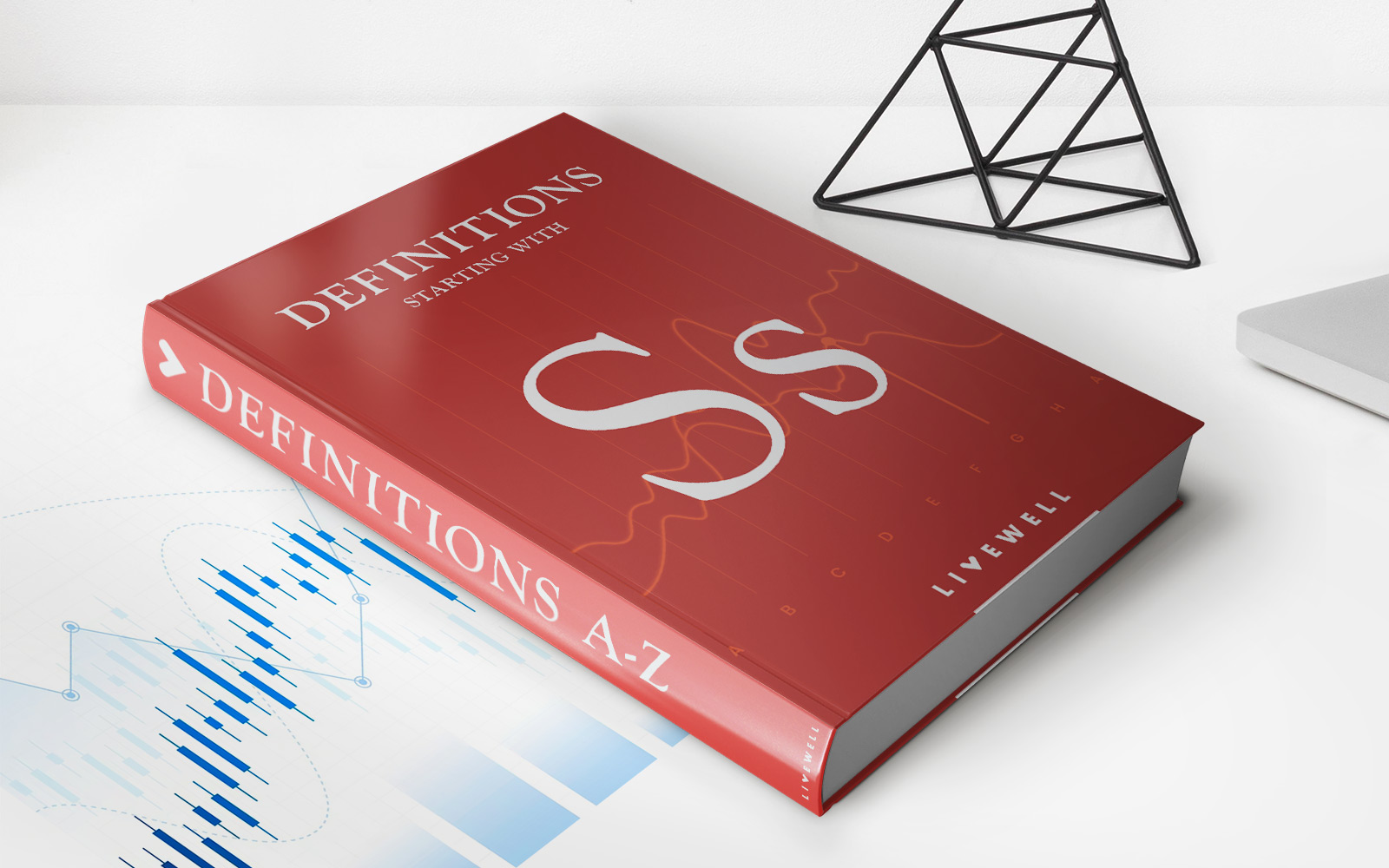Home>Finance>What Does A Grace Period Mean When Paying Loans?


Finance
What Does A Grace Period Mean When Paying Loans?
Published: February 20, 2024
Learn about the meaning of a grace period in loan payments and how it impacts your finances. Understand the implications for managing your financial obligations effectively.
(Many of the links in this article redirect to a specific reviewed product. Your purchase of these products through affiliate links helps to generate commission for LiveWell, at no extra cost. Learn more)
Table of Contents
- Understanding the Concept of Grace Periods
- Exploring the Dynamics of Grace Periods
- Exploring Grace Periods Across Various Loan Categories
- Understanding the Advantages of Grace Periods for Borrowers
- Key Factors to Evaluate When Contemplating Grace Period Utilization
- Navigating Loan Repayments with Clarity and Confidence
Introduction
Understanding the Concept of Grace Periods
When it comes to managing loans, the term "grace period" often surfaces in discussions. Understanding what a grace period entails is crucial for borrowers, as it directly impacts their repayment schedule and financial well-being. In essence, a grace period refers to the timeframe during which a borrower is not required to make payments on a loan, typically immediately after the due date. This period offers a buffer, providing borrowers with a bit of breathing room before they need to start making payments.
Grace periods are commonly associated with various types of loans, including student loans, mortgages, and credit cards. Each loan type may have its own specific terms and conditions regarding grace periods, making it essential for borrowers to comprehend the nuances relevant to their particular loan agreements.
The concept of a grace period is designed to offer borrowers a degree of flexibility in managing their finances. It serves as a transitional phase between the due date and the actual start of the repayment period. During this interim period, borrowers can strategize and allocate their resources effectively, ensuring that they are prepared to meet their financial obligations once the grace period concludes.
Understanding the intricacies of grace periods empowers borrowers to make informed decisions and navigate their financial responsibilities with confidence. In the subsequent sections, we will delve deeper into the various aspects of grace periods, exploring the types of loans that commonly incorporate this feature, the associated benefits, and important considerations for leveraging grace periods effectively. By gaining a comprehensive understanding of grace periods, borrowers can approach their loan management with clarity and foresight, ultimately fostering a more secure financial future.
Understanding Grace Periods
Exploring the Dynamics of Grace Periods
Grace periods play a pivotal role in the realm of loan management, offering borrowers a valuable window of time before they are required to commence repayments. This period varies depending on the type of loan and the terms outlined in the loan agreement. During the grace period, borrowers are not penalized for late payments, providing a cushion that can be instrumental in mitigating financial stress.
One of the key aspects of understanding grace periods is recognizing that they are not uniform across all loan types. For instance, student loans often feature a grace period that begins after the borrower graduates, withdraws from school, or transitions to a less-than-full-time enrollment status. This grace period allows individuals to ease into the repayment phase as they navigate the post-education landscape, seeking employment and stabilizing their financial standing.
Similarly, mortgages may also incorporate a grace period, typically around 15 days after the due date. During this time, borrowers can submit their payment without incurring late fees. This flexibility acknowledges the various factors that can influence a borrower’s ability to make timely payments, such as unexpected financial constraints or logistical challenges.
Credit cards, another common arena for grace periods, often provide a window of approximately 21-25 days from the closing of the billing cycle to the payment due date. If the outstanding balance is paid in full within this period, no interest is accrued. This feature enables cardholders to manage their expenses strategically, aligning their payments with their cash flow to optimize their financial management.
By understanding the nuances of grace periods within different loan contexts, borrowers can leverage this knowledge to navigate their financial commitments more effectively. This comprehension empowers individuals to make informed decisions regarding their repayment strategies, optimizing their financial resources and minimizing the risk of incurring penalties or additional charges.
Types of Loans with Grace Periods
Exploring Grace Periods Across Various Loan Categories
Grace periods are a prevalent feature in several types of loans, providing borrowers with a valuable respite before they commence repayments. Understanding the presence of grace periods in different loan categories is essential for borrowers to effectively manage their financial obligations. Here are some common loan types that incorporate grace periods:
- Student Loans: Many student loan agreements include a grace period that typically begins after the borrower graduates, withdraws from school, or transitions to less-than-full-time enrollment. This period allows individuals to prepare for the repayment phase as they embark on their post-education endeavors, such as seeking employment and establishing financial stability.
- Mortgages: Mortgage loans often feature a grace period, typically around 15 days after the due date. During this time, borrowers can submit their payment without incurring late fees, acknowledging the potential challenges that may affect timely payments.
- Credit Cards: Credit card accounts commonly offer a grace period of approximately 21-25 days from the closing of the billing cycle to the payment due date. If the outstanding balance is paid in full within this period, no interest is accrued, providing cardholders with a strategic window to manage their expenses.
- Auto Loans: Some auto loan agreements may include a grace period, allowing borrowers a brief interval before the first payment is due. This feature accommodates the adjustment period that often accompanies the purchase of a vehicle, enabling borrowers to plan their finances accordingly.
- Personal Loans: Certain personal loan arrangements incorporate a grace period, offering borrowers a temporary reprieve before they are required to commence repayments. This provision can be particularly beneficial for individuals managing various financial responsibilities.
Recognizing the presence of grace periods in these diverse loan categories equips borrowers with the knowledge to navigate their financial commitments more effectively. By understanding the specific terms and conditions associated with grace periods in each loan type, borrowers can optimize their repayment strategies and alleviate potential financial strain, ultimately fostering a more secure financial outlook.
Benefits of Grace Periods
Understanding the Advantages of Grace Periods for Borrowers
Grace periods offer borrowers a range of benefits that can significantly impact their financial well-being. By providing a transitional interval before the commencement of repayments, grace periods serve as a valuable tool for managing loans. Here are some key advantages associated with grace periods:
- Financial Flexibility: Grace periods afford borrowers the flexibility to allocate their financial resources strategically, allowing them to address other pressing expenses or build a financial cushion before committing to loan repayments.
- Transitional Support: For student loan borrowers, grace periods serve as a supportive transition from the academic realm to the professional landscape, offering breathing room as individuals seek employment and stabilize their financial footing.
- Opportunity for Strategic Planning: Grace periods enable borrowers to plan their repayment approach, aligning their financial strategy with their cash flow and other financial commitments to optimize their overall financial management.
- Prevention of Late Fees: By allowing for a grace period, loans mitigate the risk of borrowers incurring late fees due to unforeseen financial constraints or logistical challenges, providing a safeguard against punitive charges.
- Interest Savings: In the case of credit cards, utilizing the grace period to pay the outstanding balance in full can result in interest savings, empowering cardholders to manage their expenses more efficiently.
These benefits underscore the significance of grace periods in loan management, offering borrowers a degree of flexibility and support as they navigate their financial responsibilities. By leveraging the advantages of grace periods, borrowers can optimize their financial resources, mitigate potential financial strain, and approach their loan repayments with greater confidence and foresight.
Considerations Before Using a Grace Period
Key Factors to Evaluate When Contemplating Grace Period Utilization
While grace periods can offer valuable flexibility and support to borrowers, it is essential to approach their utilization thoughtfully. Before opting to utilize a grace period, borrowers should consider several key factors to ensure that it aligns with their overall financial strategy and objectives. Here are some crucial considerations to evaluate:
- Impact on Credit Score: Borrowers should assess how utilizing a grace period may impact their credit score. While grace periods may provide temporary relief from making payments, borrowers should be mindful of the potential implications for their credit standing and overall financial profile.
- Accrual of Interest: In cases where interest continues to accrue during the grace period, borrowers should carefully evaluate the financial implications of deferring payments. Understanding the impact on the total interest paid over the loan term is crucial for informed decision-making.
- Long-Term Financial Planning: When considering a grace period, borrowers should factor in their long-term financial plans and goals. Assessing how the utilization of a grace period aligns with their overall financial strategy is essential for maintaining financial stability and meeting long-term objectives.
- Communication with Lenders: It is advisable for borrowers to maintain open communication with their lenders when contemplating the use of a grace period. Understanding the lender’s policies and any potential implications can help borrowers make informed decisions that align with their financial well-being.
- Financial Preparedness: Evaluating one’s financial preparedness is crucial before opting for a grace period. Borrowers should assess whether they genuinely require the additional time and consider alternative strategies for managing their financial obligations effectively.
By carefully considering these factors, borrowers can make informed decisions regarding the utilization of grace periods, ensuring that it aligns with their overall financial health and objectives. Thoughtful evaluation and strategic planning are essential for leveraging grace periods effectively, empowering borrowers to navigate their loan management with confidence and foresight.
Conclusion
Navigating Loan Repayments with Clarity and Confidence
Grace periods serve as a valuable asset in the realm of loan management, offering borrowers a transitional phase before they commence repayments. Understanding the dynamics of grace periods, including their presence across various loan categories and the associated benefits, equips borrowers with the knowledge to navigate their financial commitments with greater confidence and foresight.
By recognizing the specific terms and conditions of grace periods in different loan contexts, borrowers can optimize their repayment strategies, alleviate potential financial strain, and foster a more secure financial outlook. The benefits of grace periods, such as financial flexibility, transitional support, and the prevention of late fees, underscore their significance in empowering borrowers to manage their loans effectively.
However, it is crucial for borrowers to approach the utilization of grace periods thoughtfully, considering factors such as the impact on their credit score, the accrual of interest, and long-term financial planning. By evaluating these considerations and maintaining open communication with their lenders, borrowers can make informed decisions that align with their overall financial well-being.
In conclusion, understanding grace periods and the considerations surrounding their utilization is essential for borrowers to navigate their loan repayments with clarity and confidence. By leveraging the benefits of grace periods while thoughtfully evaluating their implications, borrowers can optimize their financial resources, mitigate potential financial strain, and approach their loan management with strategic planning and informed decision-making.
Ultimately, a comprehensive understanding of grace periods empowers borrowers to manage their loans effectively, fostering financial stability and enabling them to pursue their long-term financial goals with resilience and assurance.














